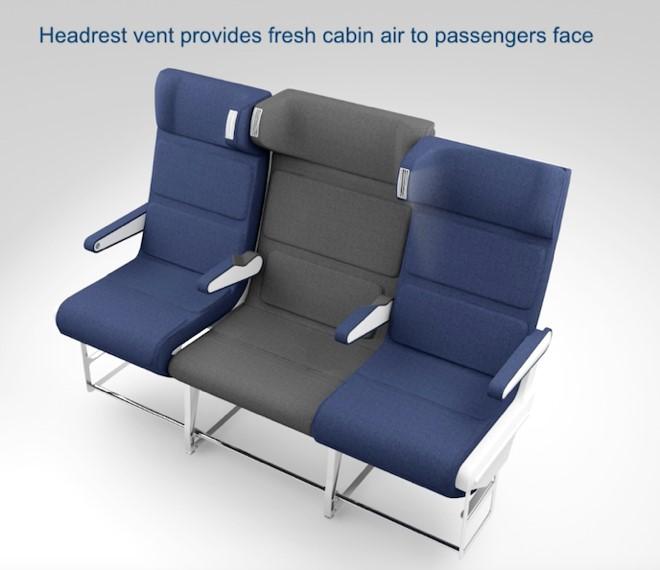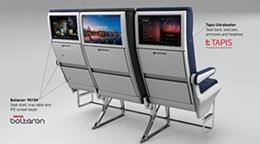
As aircraft interior companies search for new designs to ensure passengers that flying is safe, many have begun partnerships to address all three major concerns in the COVID-19-era aircraft cabin—anti-microbial surfaces, physical separation and respiratory protection.
Three companies—New York-based Tapis Corporation, plastic fabrication firm SIMONA Boltaron in Ohio and Colorado’s Molon Labe Seating—aim to address these concerns by collaborating on the use of advanced materials and seating innovations to boost passenger confidence.
The resulting product will combine Tapis’ anti-microbial Promessa Ultrafabric with thermoformed Boltaron 9815N FAR-rated anti-microbial treated sheet, with the staggered layout of Molon’s S2 economy-class seat design.

In addition, the Promessa material—which covers the new Molon S2 economy-class seat—can be cleaned with a wide range of EPA-registered cleaners/disinfectants and can withstand rigorous cleaning procedures.
Tapis Corporation sales director Matthew Nicholls told ATW: “Sanitization is one of the solutions that will come out of this pandemic, much like bulletproof cockpit doors came out of the 9/11 crisis. It will become essential to have products, such as Ultraleather with its polycarbonate top coat, that are chemically resistant to repeated cleaning and disinfecting to satisfy passengers that their space is a safe environment and ensure they return to flying. Airlines are looking for long-term solutions that provide a strong value proposition as opposed to a quick fix that only provides a solution until a vaccine/cure becomes available.”
Molon Labe Seating worked with SIMONA Boltaron’s scm360° prototyping and specialty design team to optimize the engineered design of the unique S2 seat shell design.
“When there is a unique seat configuration that could present engineering challenges for the thermoformed seat part, like the new Molon S2 seat, it’s great for us to be involved early on in the design stage of the development process,” SIMONA Boltaron director of product development Mike Robinette said.
The companies agreed that the staggered design of Molon Labe’s S2 seat helps to reduce physical touchpoints and provides more separation between passengers.
In addition, Molon’s large, one-sided headrest can act as a physical barrier that can be rotated 180 degrees to open up the seats between traveling friends and family or used to separate unknown passengers. It also offers a patented headrest vent, which would distribute fresh cabin air directly in front of the passenger’s face rather than from an overhead vent. This fresh air vent would have volume and direction adjustments similar to current overhead cabin air vents.
The partnership plans to complete the design by early 2021.
“Our aim is to look at a long-term solution by making these post-COVID specific changes to our design, addressing both passenger comfort and confidence,” the companies stated.



